 |
|
|
||||
| Info Home | ||
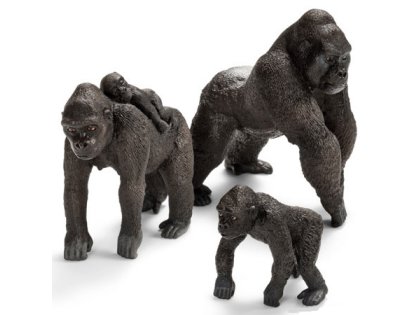 Gorillas 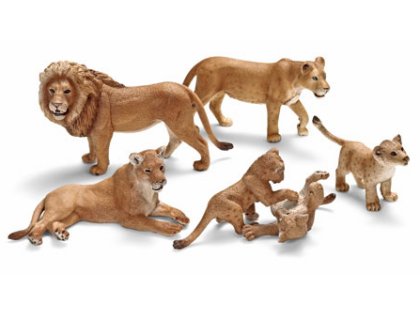 Lions 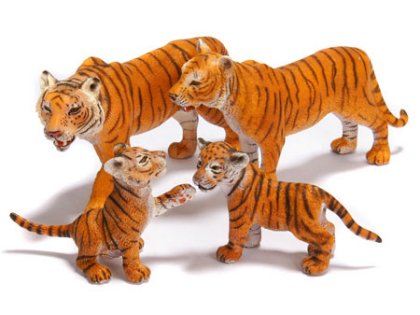 Tigers 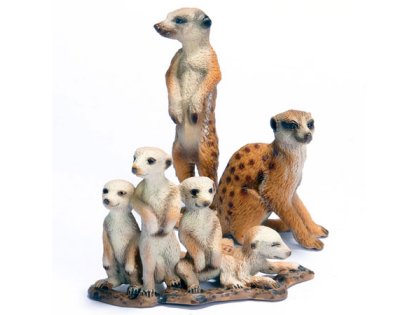 Meerkats 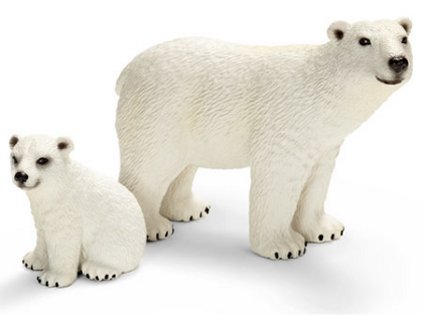 Polar Bears |
Schleich Wild Life Figures Schleich was first founded in 1935 by Friedrich Schleich, but it was not until the 1950's that the world famous Schleich figurines first went into real production with figurines such as Snoopy and The Smurfs being amongst the first to be created. During the 60's and 70's Schleich mostly concentrated on comic character figures such as Snoopy, Smurfs, Muppets, Lucky Luke, Asterix and Tintin. It wasn't until the 1980's that Schleich first started producing the Animal range that they are so famous for. Schleich's headquarters is in Schw?bisch Gm?nd, Germany. The design of the Schleich products and the creation of the required tools are done in house, thus enabling Schleich to control the initial vital steps of creating a new product. The production itself takes place at the company's German headquarters and in a number of production facilities in foreign countries. Schleich products are marketed world wide. The Schleich Philosophy: "As a manufacturer of toys Schleich carry a special responsibility towards parents and children. It is Schleich's aim to constantly live up to the image of a developer and supplier of top quality products with an educational aspect. Schleich products are developed with the assistance of parents, teachers and children and are therefore especially designed for children's hands. The design of Schleich products is as realistic and naturalistic as possible. This enables children to experience the large variety of nature - from domestic animals on a farm to wild animals in the jungle. When deciding on licensing products such as comic figurines Schleich pay careful attention to their character and the message they carry. Educational aspects play a more important part than possible sales potential." Schleich Figures have been in production since the 1980's and are now the leading animal collectable replica in the world. The models are all true to life and each meticulously hand painted. Schleich products are all made in compliance with all safety regulations. The Schleich Wild Life Range consists of animals from Africa, Asia & Australia, Artic & Antartic, Europe, America... in fact everywhere on the planet, even to the depths of the Ocean! Gorillas (Gorilla) Gorillas are the largest living representatives of the primate family. Despite their prominent canine teeth and muscular bodies, they feed almost exclusively on plants. The males are significantly larger than the females. The gorillas' habitat in the jungle of Central Africa is continuously being encroached upon due to human expansion. For this reason, there are only a small number of these animals, just as timid as they are fascinating, remaining. They are an endangered species. Conservation Status: highly endangered, Global Home: Africa, Primary Habitat: forest Fun Fact: A silvery grey fur develops on older gorillas which is why they are called "silverbacks." Lions (Panthera leo) Lions roam the African savannah in families called prides that are made up of related females, their children, and a single male. When a male reaches adulthood he gets kicked out of the pride and has to go seek his own group. Female lions hunt as a team. Together they can overpower large prey like zebras, buffalo, Giraffes, hippopotamuses, and even young elephants, but they're not above scavenging other animals' leftovers. Lions sleep as much as twenty hours a day and both males and females defend their pride from any intruders. Lions' roars are really loud and can be heard up to five miles away! Lions roar to communicate with each other and to warn off intruders. Males and females have light tan coats, but males have thick brown manes that grow larger and darker as they age. Conservation Status: Vulnerable, Global Home: Africa, Primary Habitat: Desert Fun Fact: A lion may eat sixty-six pounds of food at one mealtime. Asian elephants (Elephas maximus) Indian elephants look similar to African elephants but have shorter tusks and smaller ears. Although they do not stay in one spot for more than a few days, the habitat of this elephant varies but is often close to areas of scrub-forest. Indian elephants live in family groups that are composed of between two and ten elephants. As with the African elephants, the matriarch is in charge and ensures that all in the herd follow the social customs of the community. Experts believe that elephants have large brains. These mammals are able to imagine how others in the herd are feeling and remember information such as differentiating between individuals, recalling the experience of a drought, or knowing where the best feeding places are. Conservation Status: Endangered, Global Home: Asia, Primary Habitat: Grassland Fun Fact: Elephants can consume over five hundred pounds of food per day. Giant Panda (Ailuropoda melanoleuca) The Bamboo Bear spends up to fourteen hours per day eating over eighty pounds of his favorite dish -- you guessed it -- bamboo! He even has a special 'pseudothumb' which he uses to handle bamboo stems. This bear is usually five feet tall and weighs three hundred pounds. In the wild, pandas live to be around twenty years old; but, in captivity, they may be able to live a decade more. Generally living on their own, pandas remain with their mother for the first year or two of their lives before establishing their own territory. Due to their endangered conservation status, pandas from China were loaned to zoos in America late in the twentieth century, aptly named 'Panda Diplomacy.' Conservation Status: Endangered, Global Home: Asia, Primary Habitat: Mountains and Forest Fun Fact: Although labeled a carnivore, this bear is a vegetarian. Tiger (Panthera tigris) Tigers, one of the most endangered animals in the world, are the largest of all living cats. They live in forests, grasslands, and swamps where they hunt alone for animals such as deer, wild pigs, and buffalo. (They also eat smaller creatures like fish and birds or even other large predators like leopards.) They've been known to eat up to eighty pounds of meat in a single feeding! Tigers can travel for long distances and can leap as much as thirty feet in a single bound. They live alone and only come together to mate; females give birth to two or three babies at a time. Today only six remaining subspecies of tiger remain -- the Bengal, Indochinese, Malayan, Siberian, South China, and Sumatran. Conservation Status: Endangered, Global Home: Asia, Primary Habitat: Forest Fun Fact: Tigers can leap horizontally up to three times their body length. Red deer (Cervus elaphus) Living in groups, young deer are cared for and well-protected, especially since they camouflage well in the woods with white spots on their back. Since they must run quickly to escape predators, deer are equipped with long legs. Deer are the only mammals to grow antlers. Males use their antlers to compete with other males during breeding season. Also, during this time, red deer males grow a mane around their neck. This mane is made up of thick fur and makes the red buck look more intimidating. These deer can live between ten and twenty years, depending on whether they live in captivity or in the wild. Conservation Status: Common, Global Home: Europe, Primary Habitat: Forest Fun Fact: Red deer antlers grow one inch per day. Meerkat (Suricata suricatta) The meerkats make their home in the desert where they live with families called mobs. These mobs include about twenty meerkats, and together they create underground networks. During the day, meerkats forage for food or play while one meerkat stands guard. Meerkats use their claws to dig for insects, snakes, lizards, spiders, scorpions, and plants. Sometimes these mammals are seen wrestling or having races! The meerkat community is very social and is known for grooming each other and sharing their homes with other animals. Each meerkat's multi-colored coat has unique and different stripes. Conservation Status: Common, Global Home: Africa, Primary Habitat: Desert Fun Fact: The weight of two adult meerkats is less than the weight of one gallon of milk. Grizzly Bear (Ursus arctos) Aggressive and protective, grizzlies often feel threatened and live alone. They do congregate by bodies of water at times. Standing at eight feet tall and weighing one thousand pounds, grizzly bears are powerful, with a large hump on their shoulders and extremely strong hind legs. Grizzly bears can reach speeds of thirty five miles per hour when running. As omnivores, these bears feed on fish, plants, and large mammals such as moose, deer and black bears. Grizzly bears are also known for being scavengers, stealing food from wolves and humans. Conservation Status: Common, Global Home: Americas, Primary Habitat: Mountains and Forest Fun Fact: To prepare for hibernation, grizzly bears gain hundreds of pounds. Polar bears (Ursus maritimus) Known as the 'Maritime Bear' and represented by Knut, the polar bear is the largest carnivore on land and one of the largest of bears. Weighing over half a ton and reaching a length of almost ten feet, this bear is twice as big as a Siberian tiger. To combat the brutal arctic cold, polar bears are insulated with four inches of blubber, or a thick layer of fat. Also equipped with a layer of underfur and a layer of transparent guard hairs, these bears are prepared to swim and hunt in the coldest climate. Polar bears are skillful swimmers and have been spotted two hundred miles away from shore. To help in finding food, polar bears have a highly sensitive sense of smell. They can catch a scent that is almost a mile away or buried under three feet of snow! Its other senses of hearing and vision are of the same caliber as humans. Although they live alone, polar bears are not territorial and enjoy spending time playing with each other. Mating occurs in May, and while the mother polar bear is pregnant, she almost triples in weight. Conservation Status: Vulnerable, Global Home: Arctic, Primary Habitat: Polar Fun Fact: If a polar bear neded to wear a sneaker, it would be a US-sized 22! Bald Eagle (Haliaeetus leucocephalus) This 'sea eagle,' the national bird of the United States of America, can be found near open water, a copious food supply, and an old growth forest. Its most important food source is fish and it prefers to nest in tall, mature trees. This large bird can be forty-two inches in length, have a wingspan of eight feet, and have a mass of fifteen pounds. Interestingly enough, the females tend to be significantly larger than the males. Usually living for a score or more, eagles may migrate if their water supply freezes. Mating for life, these birds share the work of raising chicks. Conservation Status: Common, Global Home: Americas, Primary Habitat: Forest Fun Fact: This symbolic bird of prey builds a nest that is the size of a small bedroom. |
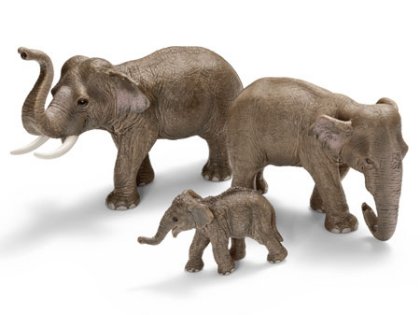 Asian Elephants 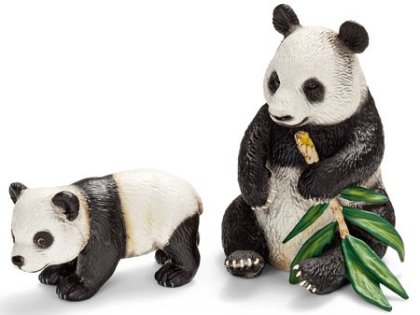 Giant Pandas 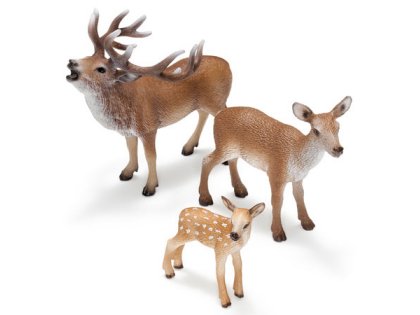 Red Deer 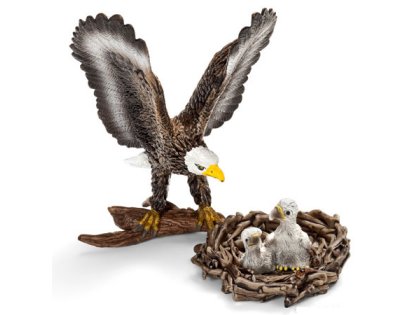 Bald Eagles 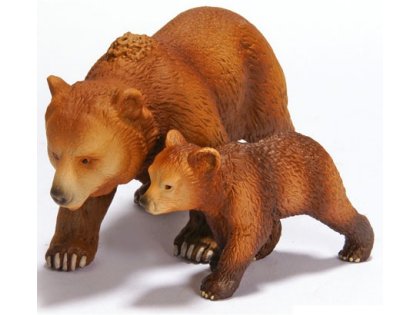 Grizzly Bears |
 |
|
|
||||||||||